Harvesting potatoes with a walk-behind tractor in an amateur garden

It is difficult to imagine that there was a time when potatoes were grown in Europe only as an ornamental and potted plant. Then they began to feed them to pigs, and only thanks to people like Antoine Auguste Parmentier and Andrei Timofeevich Bolotov, potatoes became not only a second bread for Europeans, but also a cure for the most severe vitamin deficiency - scurvy.
Potato, planted in the gardens of Paris during the French Revolution, helped survive the siege, and after several lean years saved hundreds of thousands of French people from starvation.
Today, even many city residents try to have at least a small garden where potatoes will grow. In the fall, it’s not a problem to manually dig up potatoes from two to three acres. However, in large areas it is more convenient to harvest potatoes with a walk-behind tractor.
Content:
- Why do you need to harvest potatoes within a certain short period of time?
- The advantage of the mechanized method of harvesting potatoes using walk-behind tractors of different power
- How to harvest potatoes using different types of potato diggers
Why do you need to harvest potatoes within a certain short period of time?
All rural residents and most city dwellers know the process of manually harvesting potatoes. On personal farmsteads, as a rule, plant debris was first removed from the site. After which they dug up the ground in those places where potato bushes grew.
They did this with a shovel or a pitchfork. One person dug up the ground, and others followed him with buckets and collected tubers in them.During the manual harvesting process, many of the tubers were cut with a shovel or pierced with a fork.
The process of manually harvesting tubers is quite labor-intensive, especially when you need to dig up potatoes over a large area in a short time.
If you are late in harvesting and do not have time to do it in dry weather, prolonged autumn rains may begin, leading to cold weather. Potato, dug out too late from damp soil or exposed to early frosts, they are poorly stored and begin to deteriorate and rot early.
The taste of the tubers also deteriorates. The advantage of manual cleaning is that it practically requires only physical effort and does not require an expensive walk-behind tractor and the cost of fuel and special attachments. Its main disadvantage is low productivity, limited by the physical capabilities of the human body.
The advantage of the mechanized method of harvesting potatoes using walk-behind tractors of different power
When choosing a walk-behind tractor for your personal garden, you should give preference to those models that provide for the operation of the mechanism with a variety of attachments:
- plow
- milling cutter
- hiller
- mower
- potato digger
The latter will definitely be required when the vegetable grower plans to harvest the crop using a walk-behind tractor. When choosing both a walk-behind tractor and a potato digger for it, it is necessary to take into account not only the characteristics of the mechanism, but also the characteristics of the soil and topography on the site, as well as their area.
In addition to functionality, when choosing a walk-behind tractor that will not only process soil, but also when digging potatoes, you should take into account both the power of the unit and the method of controlling it.
For harvesting potatoes from a large area, walk-behind tractors with a power of more than 5 hp are suitable. With.This equipment weighs more than 60 kg and is quite expensive. These walk-behind tractors are professional machines and are suitable for harvesting potatoes from large areas.
You shouldn’t overpay if you need to harvest potatoes from several acres. For such areas, light walk-behind tractors are suitable, their weight is from 10 to 30 kg and their power is from 1.5 to 2.5 liters. With. If the volume of potatoes is quite significant and the budget does not allow you to purchase the cheapest model, then you can choose walk-behind tractors with power from 3.0 to 5.0 hp.
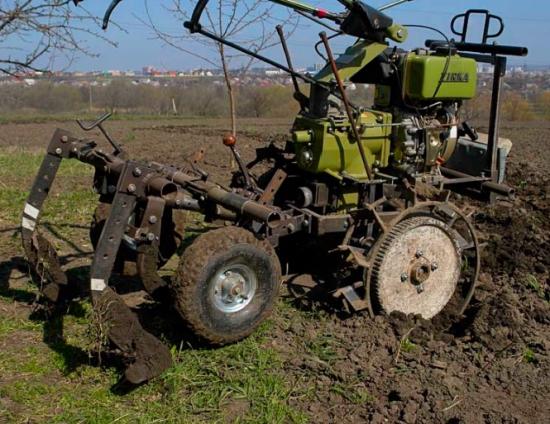
Such walk-behind tractors weigh from 40 to 60 kg. Here it should also be taken into account that with a medium and high-power walk-behind tractor you can remove potatoes from a small area, but with a low-power unit it is quite difficult to do this from a large area.
All potato diggers can be divided into two types:
- simple, they look like a shovel blade with teeth on top
- vibrating or screening type
Depending on the type of potato digger for the walk-behind tractor, the method of digging also depends tubers.
How to harvest potatoes using different types of potato diggers
Harvesting tubers using this mechanism differs little from harvesting with a regular shovel. The sharp part of the device is buried in the ground. Lifting it along with the tubers, she sends them to the teeth.
Excess soil crumbles away, and the tubers remain on the surface. People follow and collect potatoes. The use of such a potato digger increases the speed of digging up tubers, but does not affect the speed of work of potato pickers.
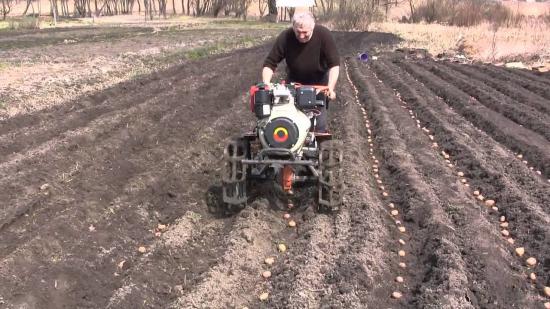
This potato digger is convenient to use in cases where one person digs and collects potatoes. Such potato diggers are available for different types of soil.
Harvesting potatoes using a walk-behind tractor with a vibrating potato digger
Such a potato digger has not only a ploughshare, which lifts the soil along with the tubers, but also a grate - a screen. The grate is placed on a kind of cart with wheels.
While moving along a row of potatoes, the ploughshare cuts the soil and lifts it along with the tubers. With the plowshares, the earth falls onto the grate. Excess soil is separated and sieved mechanically. The tubers remain on the surface. Some models are equipped with a conveyor belt that improves separation soil from tubers.
Important! If you plan to harvest the crop with a walk-behind tractor, you need to make the potato rows as straight as possible. Most mechanisms provide for processing rows about 40 cm wide. Tubers are removed from a depth of 20 cm.
The area from which potatoes can be harvested in one hour depends on the power of the mechanism and the type of soil. With conventional mid-power walk-behind tractors, you can dig up tubers over an area of up to 20 acres in an hour.
Video on how to plant potatoes with a walk-behind tractor:

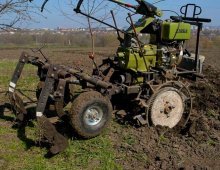
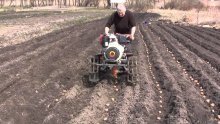
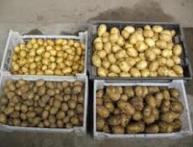

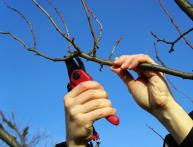

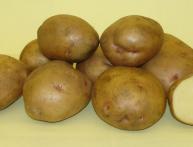

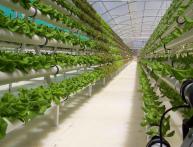
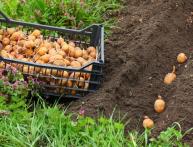
Comments
For the last three years we have only been digging with a walk-behind tractor. It happens very quickly. But to make digging more convenient, you definitely need to plant those same potatoes under the walk-behind tractor. And secondly, if a woman can dig with a shovel, only a man can operate a walk-behind tractor.